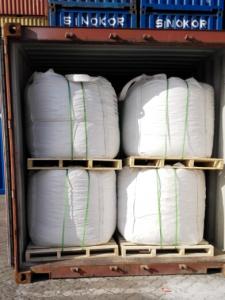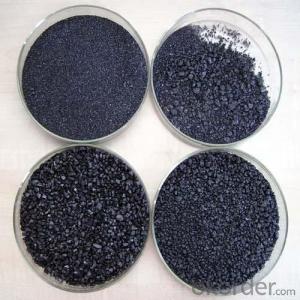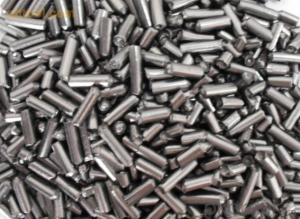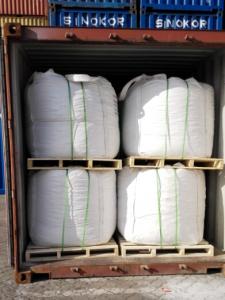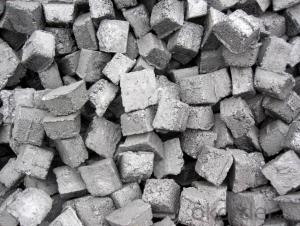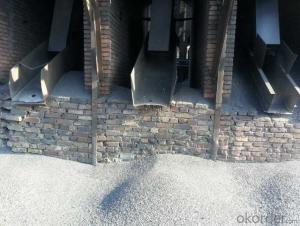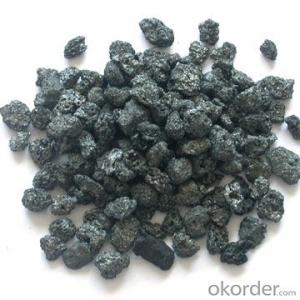Calcined Anthracite Coal CA Description
- Loading Port:
- Tianjin
- Payment Terms:
- TT or LC
- Min Order Qty:
- 20 m.t.
- Supply Capability:
- 10000 m.t./month
OKorder Service Pledge
OKorder Financial Service
You Might Also Like
Quick Details
Place of Origin: Ningxia, China (Mainland)
Application: steel making
Shape: granule
Dimensions: FC90-95%
Product Type: Carbon Additive
C Content (%): 90-95% MIN
Working Temperature: -
S Content (%): 0.5%MAX
N Content (%): -
H Content (%): 0.6%MAX
Ash Content (%): 8.5%MAX
Volatile: 2%MAX
ADVANTAGE: low ash & sulfur
COLOR: Black
RAW MATERIAL: TaiXi anthracite
Packaging & Delivery
| Packaging Details: | In 1MT plastic woven bag. |
|---|---|
| Delivery Detail: | 30-40DAYS |
Specifications
Calcined Anthracite Coal CA Description
Carbon Additve low Ash,S,P
FC>95% ASH<4% S<0.3%
It is made from TaiXi anthracite.
instead of pertrol coke reduce the cost
Structure
Calcined Anthracite Coal CA Description
Shape: granule
Dimensions: FC90-95%
Product Type: Carbon Additive
C Content (%): 90-95% MIN
Working Temperature: -
S Content (%): 0.5%MAX
N Content (%): -
H Content (%): 0.6%MAX
Ash Content (%): 8.5%MAX
Volatile: 2%MAX
ADVANTAGE: low ash & sulfur
COLOR: Black
RAW MATERIAL: TaiXi anthracite
Feature
Calcined Anthracite CA Description
Specifications (%): | ||||||
Grade | F.C | Ash | V.M | Moisture | S | Size |
CR-95 | ≥95 | <4 | <1 | <1 | <0.3 | 0-30mm |
CR-94 | ≥94 | <4 | <1 | <1 | <0.3 | |
CR-93 | ≥93 | <6 | <1 | <1 | <0.4 | |
CR-92 | ≥92 | <7 | <1 | <1 | <0.4 | |
CR-91 | ≥91 | <8 | <1 | <1 | <0.4 | |
CR-90 | ≥90 | <8.5 | <1.5 | <2 | <0.4 | |
Image
Calcined Anthracite Coal CA Description
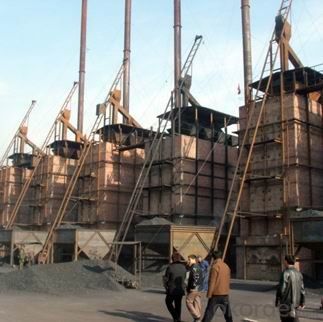
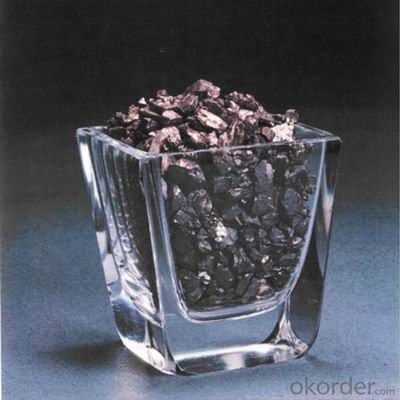
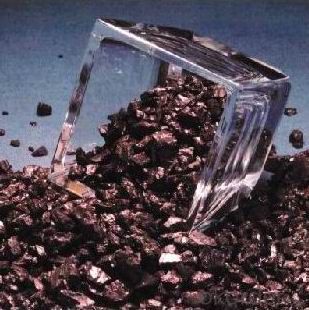
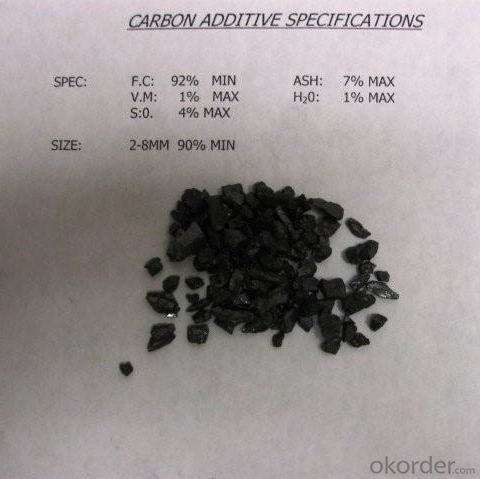
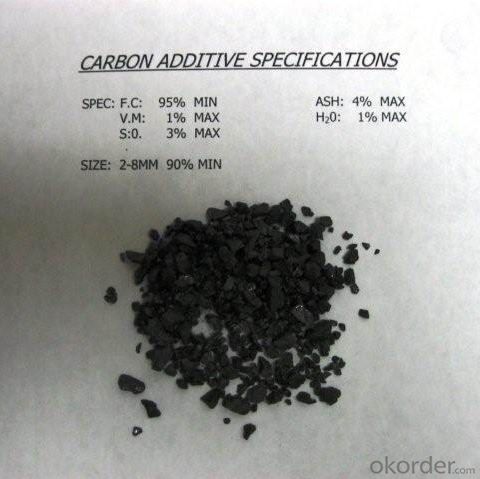



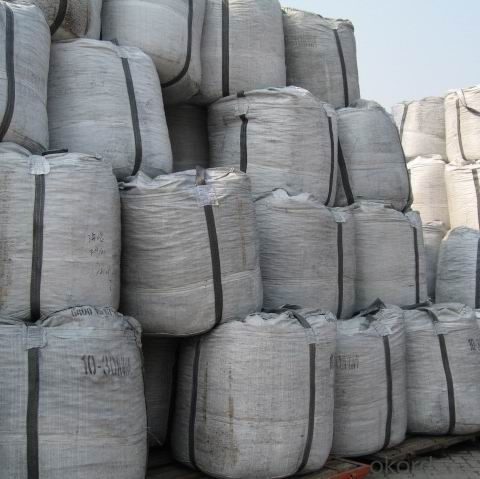
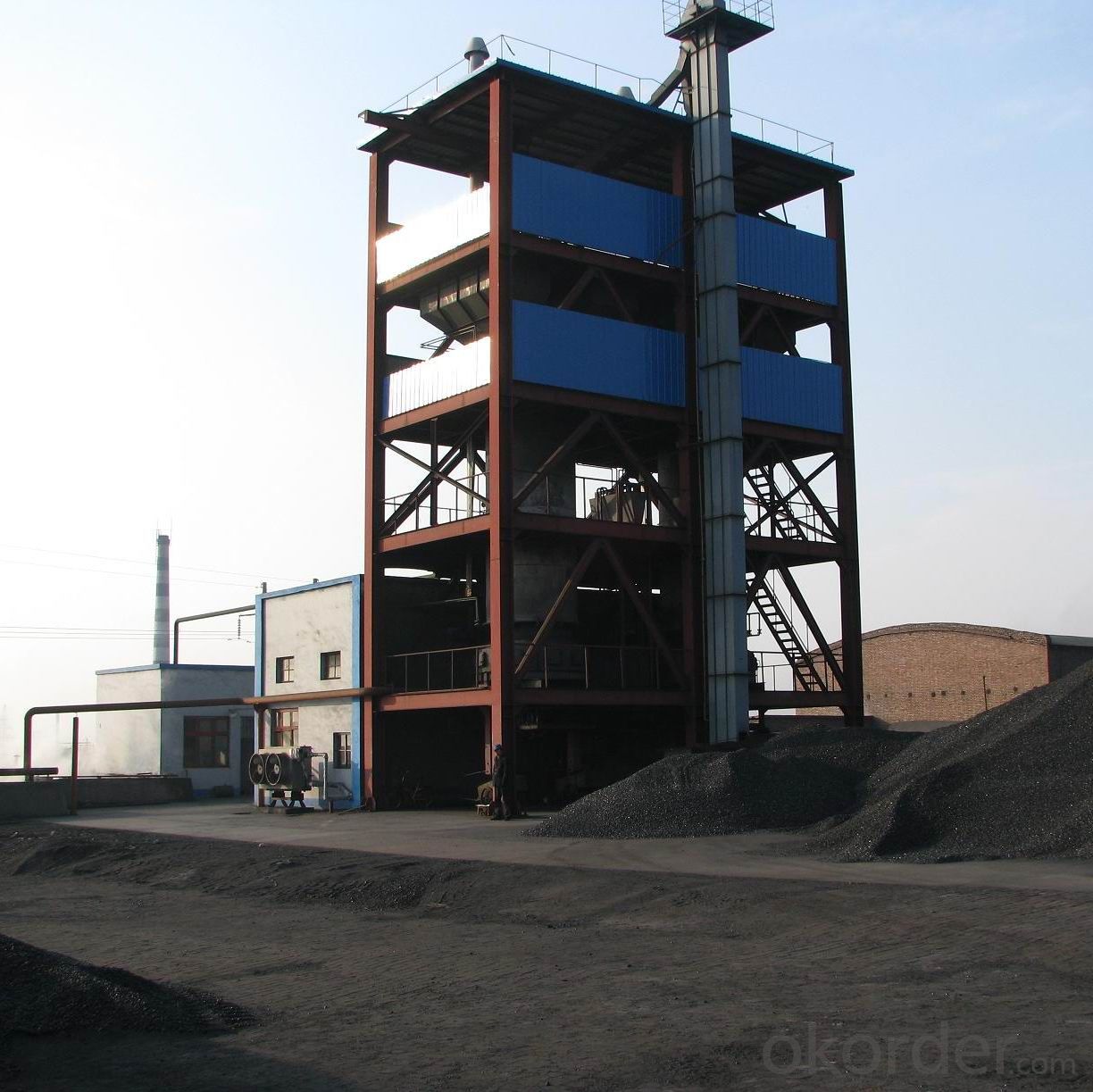
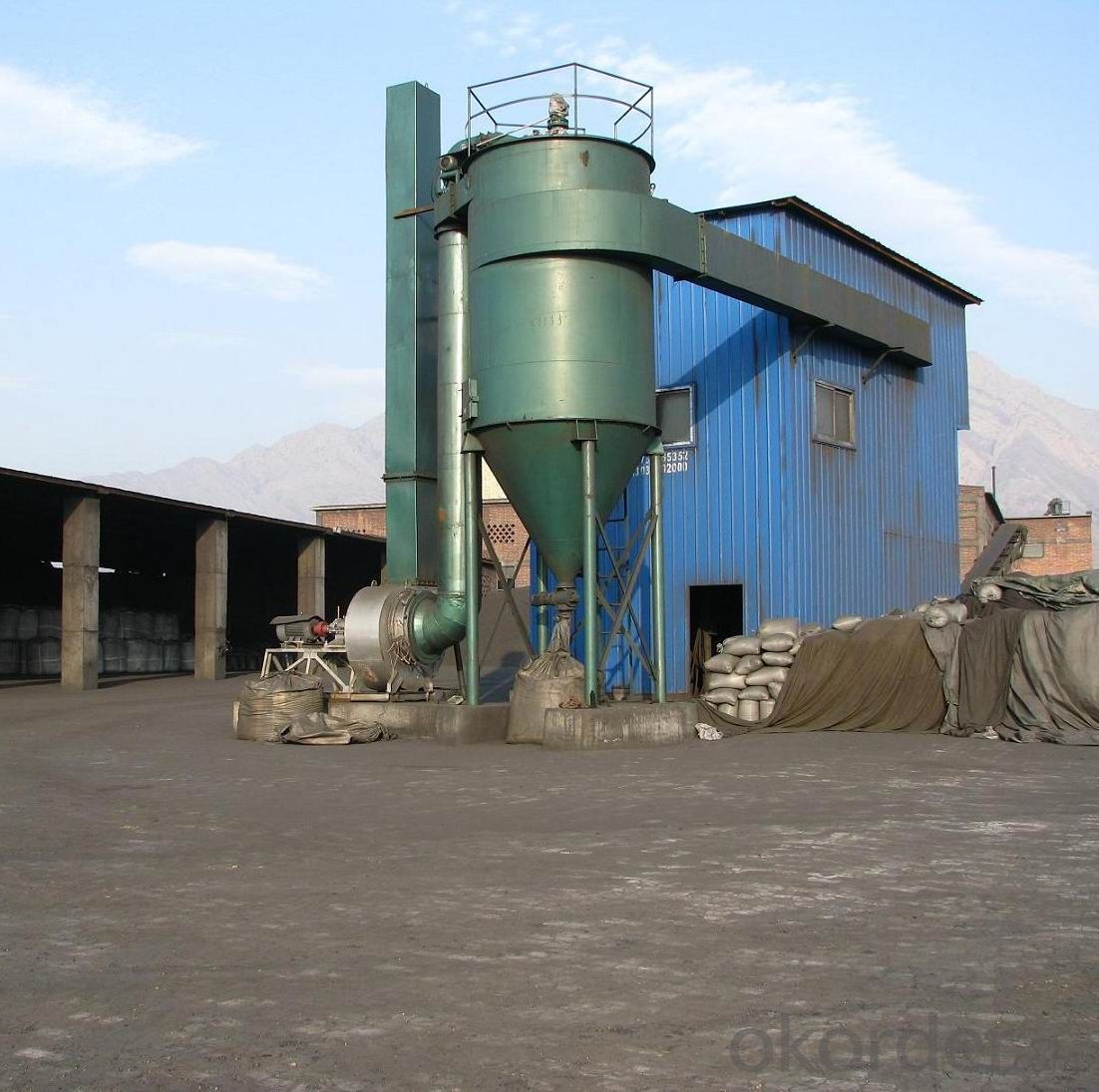
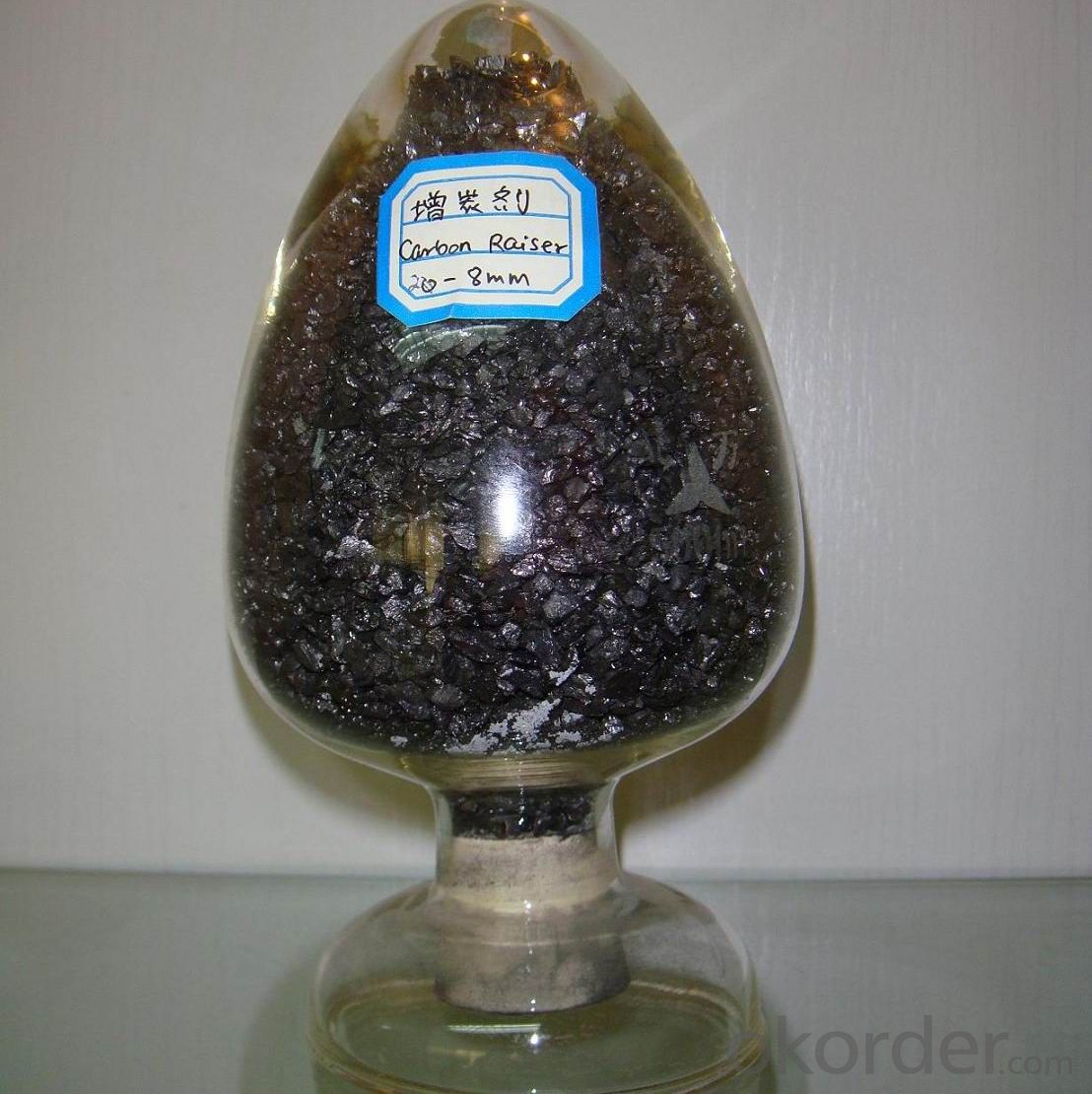
FAQ:
Calcined Anthracite Coal CA Description
Why we adopt carbon additive?
Carbon Additives used as additive in steel making process. It made from well-selected Tai Xi anthracite which is low in content of ash, sulphur, phosphorus, high heat productivity, high chemically activation.
Mainly industry property of it is: instead of traditional pertroleum coal of Carbon Additives, reduce the cost of steelmaking.
Advantage:
Calcined Anthracite Coal CA Description
1.High quality and competitive price.
2.Timely delivery.
3.If any item you like. Please contact us.
Your sincere inquiries are typically answered within 24 hours.
- Q:What is the primary source of carbon monoxide in the atmosphere?
- The primary source of carbon monoxide in the atmosphere is the incomplete combustion of fossil fuels, such as coal, oil, and gas, as well as biomass burning.
- Q:What are the impacts of carbon emissions on the stability of islands?
- The stability of islands is greatly affected by carbon emissions, with significant and wide-ranging impacts. Climate change, which is caused by carbon emissions, leads to various consequences such as sea level rise, increased storm intensity, and ocean acidification. All of these factors pose serious threats to the stability of islands. Sea level rise is an immediate and visible consequence of carbon emissions on islands. As global temperatures rise, glaciers and ice caps melt, and ocean waters expand, the sea levels gradually increase. This rise in sea level puts low-lying islands in danger of being flooded, eroded, or even completely disappearing. In fact, many small islands, especially in the Pacific and Indian Oceans, are already witnessing the effects of rising sea levels, resulting in the loss of land, displacement of populations, and destruction of infrastructure. Another impact of carbon emissions on islands is the heightened intensity and frequency of storms. The warmer ocean temperatures caused by carbon emissions fuel the formation of tropical storms and hurricanes, which can cause devastating damage to island communities. These storms can lead to widespread destruction of homes, infrastructure, and ecosystems, resulting in long-term economic and social disruptions. Islands are particularly vulnerable to storm surges, which occur when strong winds push seawater onto land, causing extensive flooding and erosion. Ocean acidification, which is caused by the excess absorption of carbon dioxide by the ocean, is another significant consequence of carbon emissions on islands. Increased levels of carbon dioxide in the atmosphere lead to increased absorption by the ocean, resulting in a decrease in pH levels and making the ocean more acidic. This acidification poses a threat to coral reefs, which are crucial for island ecosystems and act as natural barriers against wave action and storm surge. Coral reefs provide habitats for a diverse range of marine life and are vital for tourism and local economies. The loss or degradation of coral reefs due to ocean acidification affects not only the biodiversity but also the ability of islands to withstand climate-related impacts. In conclusion, the impacts of carbon emissions on the stability of islands are profound and severe. Rising sea levels, increased storm intensity, and ocean acidification all present significant threats to the physical and social stability of island communities. It is crucial to take urgent action to reduce carbon emissions, invest in adaptation measures, and support island nations in building resilience to these impacts.
- Q:What is coal?
- Coal, a sedimentary rock primarily composed of carbon, is black or brownish-black in color and contains various other elements such as hydrogen, sulfur, oxygen, and nitrogen. It forms from the remains of plants that lived and died millions of years ago, accumulating in swampy environments. Over time, the layers of plant material experience high pressure and heat, resulting in coal formation. As one of the most abundant fossil fuels on Earth, coal has been utilized as an energy source for centuries. It is typically extracted from underground or surface mines and exists in different forms, including anthracite, bituminous, sub-bituminous, and lignite, each with varying carbon content and heating value. Due to its high carbon content, coal is primarily employed for electricity generation and fueling industrial processes. When burned, it releases heat energy that is converted into electricity through the utilization of steam turbines. Nevertheless, the combustion of coal also emits greenhouse gases and other pollutants, contributing to air pollution and climate change. Apart from its use as a fuel, coal finds application in the production of steel and cement, as well as various industrial processes. It is a versatile resource that has played a pivotal role in the advancement of modern societies. However, its environmental impact and finite nature have spurred efforts to transition towards cleaner and more sustainable energy sources.
- Q:How about carbon content of coal ash?
- 3, burning(1) prepared burning specimen with constant weight in the outer side of the crucible crucible, only a few 10-18ml and drying on the only black ink written into the code, mother Eph furnace, baby 50+-25 degrees Celsius temperature burning 1 hours after cooling, weighing with analytical balance, write down the number of crucible weight again after burning, and then weighed to weight two times constant (weight <=0.0004 grams). Record crucible weight G1.(2) place about 1 grams of dry ash sample in a constant crucible, and accurately weigh (accurate to 0.0001 grams), record (crucible + sample) weight G2. (3) a crucible with soil sample is placed in a crucible cover, heated to 875 degrees Celsius in the Maffei furnace for ignition, keep the temperature of 850+-25 degrees Celsius, after 2 hours, take out, after cooling, cooling to room temperature to put in a drying box. 4 W T'o X7 I3 L) |% "Z (4) weighing burned (crucible + specimen), down under the weight of G3.4. Calculate ash carbon content C (%) = (G2-G3) / (G2-G1) *100 (%)
- Q:How does carbon affect the formation of smog?
- Carbon plays a significant role in the formation of smog, particularly in the form of carbon monoxide (CO) and volatile organic compounds (VOCs). When fossil fuels are burned, such as in vehicles, power plants, or industrial processes, carbon is released into the atmosphere in the form of CO and VOCs. These carbon emissions, especially in areas with high population density, can contribute to the formation of smog. Smog is a mixture of air pollutants, primarily ground-level ozone, which is formed when nitrogen oxides (NOx) and VOCs react in the presence of sunlight. Carbon monoxide is a precursor to the formation of ground-level ozone. It reacts with nitrogen oxides and sunlight to form ozone, a major component of smog. VOCs, on the other hand, react with nitrogen oxides in the presence of sunlight to form additional ground-level ozone. Additionally, carbon particles, also known as black carbon or soot, can contribute to the formation of smog. These particles absorb sunlight and heat the surrounding air, leading to temperature inversions. Temperature inversions trap pollutants close to the ground, preventing them from dispersing and exacerbating smog formation. Reducing carbon emissions is crucial in controlling and preventing smog formation. Implementing cleaner technologies, such as catalytic converters in vehicles and using cleaner fuels, can help decrease the release of carbon monoxide and VOCs. Furthermore, promoting renewable energy sources and reducing reliance on fossil fuels can significantly reduce carbon emissions, thus mitigating the formation of smog.
- Q:I heard that 85 of the furnace rock carbon harmony, and the result that I use advanced strengthening machine when I want to give high-grade furnace rock carbon, this how ah?
- DNF advanced method for obtaining carbon from furnace rock:DNF advanced furnace carbon can acquire rock at the mall, priced at 450 points and 50 points 10 coupon coupon 1.DNF advanced furnace rock carbon action:The use of advanced furnace rock carbon can start at the Kylie advanced equipment reinforcement machine, strengthening the probability of success is greater.Point Keri election advanced strengthening, plus ten or more equipment to strengthen, the probability is 10% more than ordinary furnace carbon
- Q:How does carbon impact the energy balance of the Earth?
- Carbon impacts the energy balance of the Earth by trapping heat in the atmosphere through the greenhouse effect. This leads to an increase in global temperatures, known as global warming, and disrupts the natural equilibrium of energy flow on the planet.
- Q:What is methane?
- Methane is a colorless and odorless gas that is the primary component of natural gas. It is formed from the decay of organic matter and is a potent greenhouse gas.
- Q:When is gold resistance better? When will carbon resistance be better?
- The gold resistance is of high accuracy, but the price is high. The resistance value of the carbon resistor is low, but it is cheap!
- Q:What is the relationship between carbon emissions and deforestation?
- The relationship between carbon emissions and deforestation is that deforestation contributes significantly to carbon emissions. When trees are cut down or burned, the stored carbon within them is released into the atmosphere as carbon dioxide (CO2), a major greenhouse gas. This process directly contributes to climate change and global warming. Additionally, deforestation reduces the Earth's capacity to absorb CO2 through photosynthesis, further exacerbating the carbon emissions problem. Therefore, reducing deforestation is crucial in mitigating carbon emissions and combating climate change.
1. Manufacturer Overview |
|
|---|---|
| Location | |
| Year Established | |
| Annual Output Value | |
| Main Markets | |
| Company Certifications | |
2. Manufacturer Certificates |
|
|---|---|
| a) Certification Name | |
| Range | |
| Reference | |
| Validity Period | |
3. Manufacturer Capability |
|
|---|---|
| a)Trade Capacity | |
| Nearest Port | |
| Export Percentage | |
| No.of Employees in Trade Department | |
| Language Spoken: | |
| b)Factory Information | |
| Factory Size: | |
| No. of Production Lines | |
| Contract Manufacturing | |
| Product Price Range | |
Send your message to us
Calcined Anthracite Coal CA Description
- Loading Port:
- Tianjin
- Payment Terms:
- TT or LC
- Min Order Qty:
- 20 m.t.
- Supply Capability:
- 10000 m.t./month
OKorder Service Pledge
OKorder Financial Service
Similar products
New products
Hot products
Hot Searches
Related keywords
